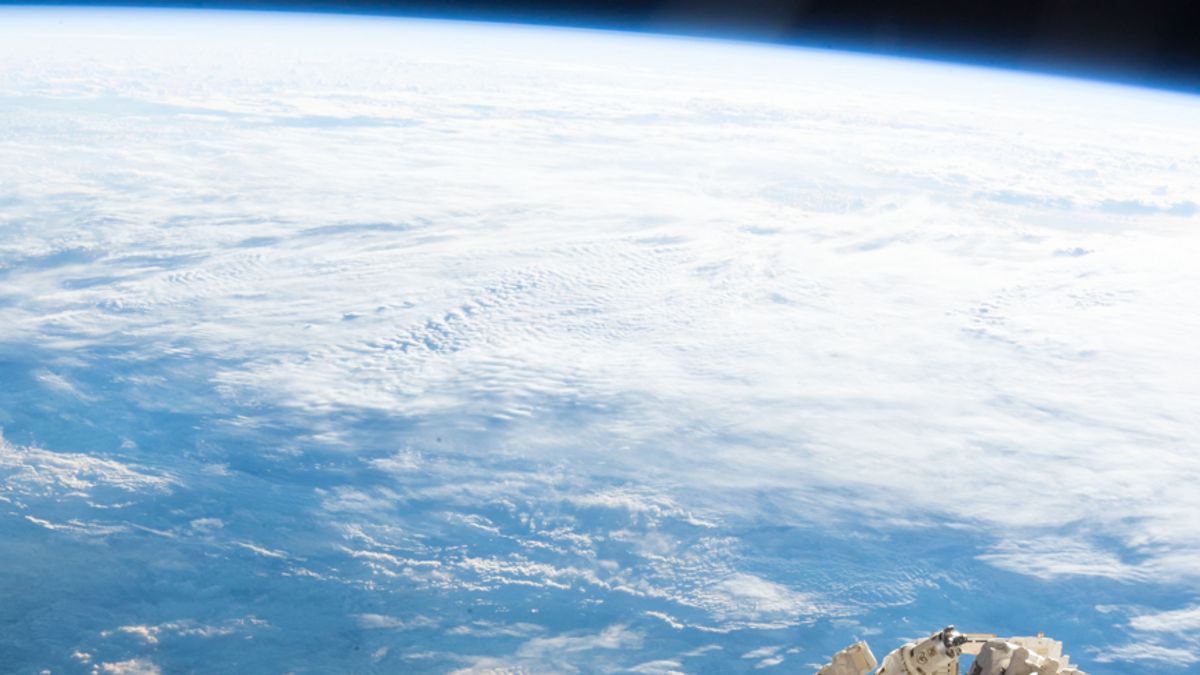JAKARTA - Recently, the social media (medsos) universe has been enlivened by predictions of the 2021 PDC asteroid that will hit Earth. The circulating narrative also states that the world's population will flee to Indonesia.
In fact, the 2021 PDC asteroid is part of a simulation at the Planetary Defense Conference in Vienna, Austria, which will be held on April 26-30 2021. The United Nations is one of the institutions that initiated the conference.
During the conference, experts will discuss the impact of astroids if they actually hit Earth and rescue strategies for the world community.
The United States Space Agency (NASA) says that the 2021 PDC asteroid is just a simulated test. So that all information presented is fictitious.
"While this scenario is realistic in many ways, it is completely fictional and does NOT represent a true potential asteroid impact," wrote NASA, Thursday, April 22.
In addition, the naming of the asteroid also shows other evidence that this asteroid never existed. NASA emphasized that the asteroid's last name consists of only three letters, "PDC".
"To reinforce the fact that this is not a real asteroid, we use three letters as a marker, something that would never be done for a real asteroid," said NASA.

In the PDC scenario, it is known that astronomers find an asteroid measuring 120 meters to 700 meters toward Earth's orbit. When first detected, the asteroid was about 0.38 au (57 million kilometers or 35 million miles) from Earth.
The asteroid is approaching Earth at a speed of about 5 km / s and is slowly getting closer. PDC 2021 was observed extensively during the week after discovery, and as the observational data set increases from one day to the next, the probability of impact increases.
The orbit of the asteroid 2021 PDC has a trajectory that extends from a distance of 0.92 au from the Sun at its closest point to 1.60 au at its farthest point, just beyond the orbit of Mars. Au is the Earth's average distance from the Sun, 149,597,870.7 km or 92,955,807 miles. The orbital period of the asteroid is 516 days (1.41 years) and its orbital plane is tilted 16 degrees to the plane of Earth's orbit.
"By April 26, 2021, the first day of the 2021 Planetary Defense Conference, the probability of impact has risen to around 5 percent. Other scenarios will play out at the conference," the PDC scenario quoted.
Referring to the simulation uploaded on the NASA website, it is stated that an asteroid collision can occur anywhere. However, based on the scenario described all regions of the country and continents are at risk of potential impact.
"If the asteroid is on a collision trajectory, the probability will continue to increase, reaching as high as 30 percent by the end of the week (October), 70 percent the next week, and 90 percent during the following week. If the asteroid is not on an impact trajectory, the probability of collision may still increase. for a while but will eventually drop to zero, "the PDC quoted him as saying.
As mentioned earlier, the size of the 2021 PDC is very uncertain, ranging from as small as 35 meters to as large as 700 meters. The estimate is based on the brightness of the asteroid, its approximate distance, and various possible albedos (reflectivity). As a result, the potential impact of damage and risk to the population is also very uncertain.
However, the scenario states that the energy that may be released during an impact can range from 1.2 Mt to 13 Gt (TNT equivalent). The main danger is jet air causing an excess of explosive pressure which may reach unavoidable levels.
"The size of the potential blast damage area can range from local (several kilometers) at the small end in the possible asteroid size range, to regional (hundreds of kilometers) at the large end," the PDC quotes.
Disaster mitigationAlthough only a fictional scenario, astronomers and experts believe that the dangerous potential of an asteroid impact could occur at any time. For this reason, experts must prepare various plans for disaster mitigation as a fast response.
One deterrent option is to launch a Double Asteroid Redirection Test (DART) mission or an asteroid diversion test using an orbiting satellite to launch it at the asteroid. The purpose of the mission is to change the orbital path of the asteroid that will collide with Earth.
"DART will be the first test for planetary defense, and the data will help scientists better understand one way to reduce the potentially dangerous future of asteroids," said Andrea Riley, DART program executive for NASA.
On the other hand, the 2021 PDC asteroid impact scenario also projects areas at risk of potential impact. Conversely, areas of the Earth that are not included in the picture, for example Australia and Indonesia are not at risk.
The strategy of saving Earthlings was also taken into account by experts at the PDC conference. Given that humanity on Earth only has a little time to save themselves before an asteroid collision occurs.
Like the Greenland film, starring Gerard Butler, when he discovered that the Earth was about to be hit by a giant comet. The government has also prepared a bunker as a place of refuge.
The option to build a bunker is one thing that is taken into account, when there is a global scale disaster that occurs. Of course, there are big costs, before the chaos caused by a big disaster.
The English, Chinese, Japanese, Arabic, and French versions are automatically generated by the AI. So there may still be inaccuracies in translating, please always see Indonesian as our main language. (system supported by DigitalSiber.id)










